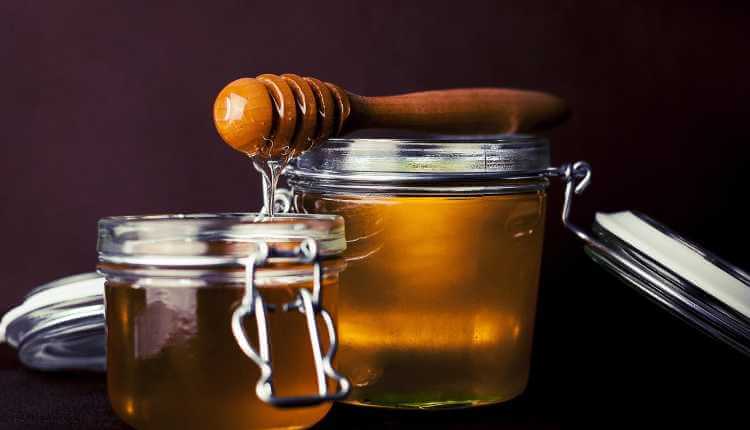Are you perplexed by the variety of honey available on the market? Should all the honey varieties resemble you? Are you unsure which kind of honey to use? If you answered yes to any of these inquiries, we would assist you. This article would explain what raw and organic honey are, the inconsistencies between them, a potential issue between them, and which one is superior and why. Therefore, continue reading this post to the finish.
What is Unprocessed or Unpasteurized Honey?
Unpasteurised honey has not been cooked beyond 45 degrees Celsius, and the pollen grains have not been filtered. They crystallise rapidly due to their high pollen content. Because crystallised honey gives the impression of being adulterated with sugar syrup, most brands do not market raw honey. However, raw honey is available from a few specialised internet outlets, in a few small stores, and the safest way is to buy it at a farmers market. This honey may be strained to extract bee body parts and beeswax, and straining gives the honey a liquid quality. Additionally, raw honey is often kept in natural containers such as amber glass pans. Since this one is not pasteurised, it retains all of the essential nutrients.
What is Certified Organic Honey?
This kind of honey is fully antibiotic- and chemical-free. This type of honey is certified and must be kept at least 5 to 8 miles away from chemical sources such as factories, roads, and residences. It is unethical to market honey labelled as organic and bearing unique codes such as ‘DE-OKO-001’ or ‘GB-ORG-04’, etc., whether the honey does not fulfil the above criteria. This honey is government-certified to be the safest and finest. Organic honey must adhere to the same organic livestock standards as organic livestock. These requirements are mandatory to guarantee that honey consumers get chemical-free. Even the flowers from which honey bees can collect nectar must be sustainable, which means they must be produced spontaneously without unnecessary fertilisers or pesticides. This kind of honey is also strained to separate bee body parts and beeswax fragments, although it is not pasteurised.
Note:- Every nation has its own collection of guidelines for organic honey. Search for your country’s requirements. Additionally, not every nation has stringent laws to deter citizens from doing wrong. Make an informed choice based on your country.
What is Processed Honey?
Honey that has not been pasteurised is clear and creamy. The pasteurisation method enhances the colour of the honey, extends its shelf life, and eliminates yeast cells that may impair the honey’s flavour.
However, others suggest that pasteurisation diminishes the antioxidant and nutrient content of honey.
How are They Dissimilar?
Raw honey is inherently cloudier than processed honey due to honeycomb particles that cannot be filtered out.
Raw honey has a greater degree of colour and texture variance than normal honey. The colour of raw honey varies according to the flowers pollinated by bees.
Although no major study has conclusively established that raw honey is more nutritious than standard honey, several limited studies indicate that raw honey can have additional health benefits.
Difference Between Raw Honey and Pure Honey
Here is the difference between raw honey and pure honey –
- Raw honey is extracted directly from every beehive located everywhere in the world. On the other side, organic honey needs a fully functional and attractive setup.
- Working with organic honey is significantly more complex than working with raw honey, which is one reason why organic honey is significantly more costly.
- However, organic honey requires a lot of permits and routine inspections, whereas raw honey does not.
- Raw honey can contain some toxic substances, whereas organic honey does not.
The Identification Problem
Although it is possible to say the difference between raw and organic honey just from gazing at it, it is impossible to tell the difference between raw and organic honey. Both are opaque and dense, with a cloudy-yellow hue.
What you should do is stop ordering honey digitally and, if you must, ensure that the container is sealed and that you purchase from a reputable source. Although buying honey from local shops is a brilliant idea, it is advised that you do so via a reputable source, and the same holds for purchasing it directly from a farmer. Additionally, stop buying branded honey; most branded honey is pasteurised, and pasteurised honey lacks a significant amount of important minerals.
Cultured Honey Vs. Wild Honey
There is something called cultured and wild honey as well. Cultured honey is the same raw honey that we saw earlier. In cultured honey, we remove the pollen particles, while in wild honey, we do not remove anything, leave the honey untreated and is consumed directly. This is cultured honey vs wild honey.
Conclusion – Which One Do You Select?
After reading this post, it should be clear that organic honey is preferable to raw honey. Although raw honey is acceptable, it can never compare to organic honey. Additionally, natural honey is superior to refined and pasteurised honey offered by the majority of brands. If you use honey regularly (which you should), it is not always practical to use organic honey; in this situation, raw honey may be used instead, although organic honey is always preferred. We truly hope you found what you sought. Kindly inform us in the comment section if you are aware of any additional distinctions between raw and organic honey.


